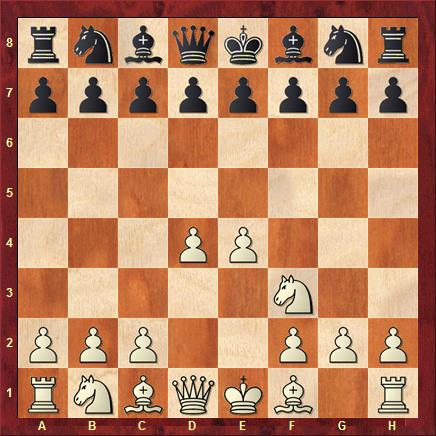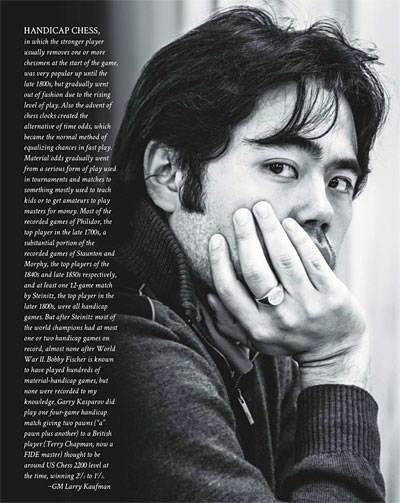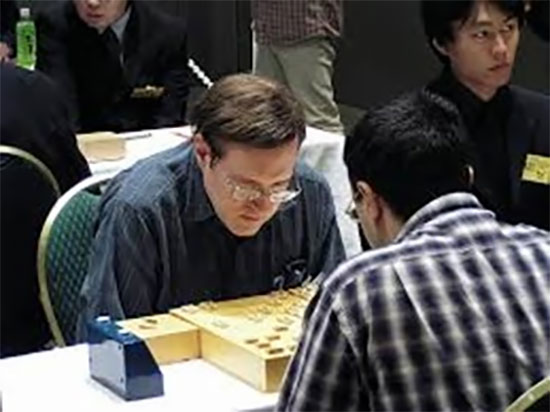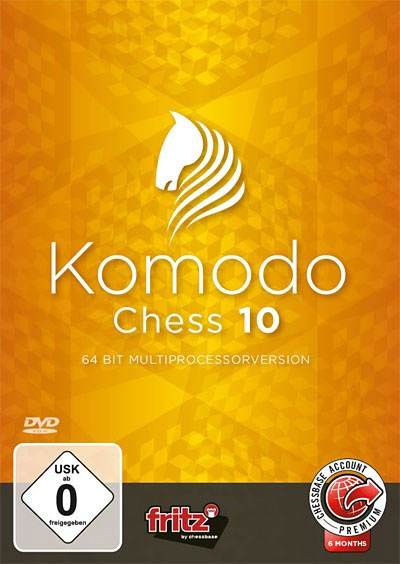By Priyadarshan Banjan and Albert Silver
It was the final game of this Man vs. Machine Match. The then world No. 6 Hikaru Nakamura had managed to somehow hold the Komodo 09 engine to draws in the first three games, but these were no ordinary games — in each of them, Komodo had material handicaps. In the first game, the engine played black without the pawn on f7, in the second with white, without one on f2. In the third game, the odds were heftier: Komodo was white and played without the rook on a1 while Nakamura played without the knight on b8 and started with the rook on that square. This was the fourth game, about to begin, but this time, Naka had no extra material but was given three moves, e4, d4, and Nf3, for free in the starting position — in keeping with the adage: a pawn is worth three moves.

Nakamura vs. Komodo, Game 4 of Handicap Match started from this position
Komodo slowly neutralized White's advantage and went on to win a very impressive game, with excellent endgame play.
Nakamura-Komodo, Game 4, Handicap Match (Notes by GM Larry Kaufman)

[Event "Handicap Match"] [Site "Chess.com"] [Date "2016.01.07"] [Round "4"] [White "Nakamura, Hikaru"] [Black "Komodo"] [Result "0-1"] [WhiteElo "2787"] [BlackElo "3368"] [Annotator "Larry Kaufman"] [SetUp "1"] [FEN "rnbqkbnr/pppppppp/8/8/3PP3/5N2/PPP2PPP/RNBQKB1R w KQkq - 0 1"] [PlyCount "116"] [EventDate "2016.??.??"] {Four move handicap was novel. Some thought it would be easier for Hikaru than the material handicaps, but others felt it would be the hardest for him. I rated it as more than f2 but less than f7 or the Exchange handicaps.} 1. c4 { I think that playing for development, for example Bd3, was more appropriate than playing for space, but perhaps Hikaru knows best.} d6 2. Nc3 g6 3. Qb3 { This looks strange, but it's not clearly bad.} c6 4. Be2 Qb6 5. Qc2 Bg7 6. O-O Nf6 7. h3 O-O 8. Be3 Qc7 9. Rac1 $6 (9. b4 b6 10. a4 {would keep a large space advantage and initiative. The move played was a bit slow.}) 9... Nbd7 10. Rfd1 b6 11. Qd2 {Again, b4 seems better.} Bb7 12. b3 Rad8 13. Bh6 {Komodo thinks this bishop exchange helps him.} (13. d5 {was probably better.}) 13... e5 14. Bxg7 Kxg7 15. d5 a5 {White now has the "wrong" color bishop for the pawn structure, and little remains of his four move handicap.} 16. Qe3 Ra8 17. Ne1 Nc5 18. Nd3 Qe7 19. Nb2 Nfd7 20. Nca4 $6 (20. Qd2 Rac8 21. dxc6 Rxc6 22. Nba4 { kept a small advantage due to the backward d6 pawn.}) 20... f5 {Now the game looks like a fairly normal King's Indian with no hint of the handicap.} 21. Nxc5 bxc5 22. f3 $6 (22. dxc6 Bxc6 23. Bf3 {kept equality.}) 22... Nf6 23. g4 Rf7 24. Rf1 Raf8 25. Kh2 fxg4 26. fxg4 h5 27. gxh5 Nxh5 28. Rxf7+ Qxf7 29. Rf1 Nf4 {Black has an obvious advantage now due to the knight outpost.} 30. Bg4 cxd5 31. exd5 Qc7 32. Qg3 Rf6 33. Rf2 Bc8 34. Nd1 Bxg4 35. Qxg4 Qf7 36. Qh4 Rf5 37. Ne3 $6 (37. Qg4 {was necessary with a poor but defensible game.}) 37... Rh5 38. Qg4 Qe7 39. Rf3 Rg5 40. Qc8 Ne2 41. Qe6 Qxe6 42. dxe6 Nf4 43. Rg3 $2 (43. Nd5 Nxe6 44. Nf6 Rf5 45. Ne8+ Kh6 46. Kg2 Nf4+ 47. Kg1 d5 48. cxd5 Nxd5 { White has just a little compensation for the pawn, but he's not clearly lost.}) 43... Rh5 44. Nd5 Nxe6 45. Nc3 Nd4 46. Ne4 Nf5 47. Rd3 $6 (47. Rg4 {was necessary to stop ...Rh4. Perhaps Black would win anyway.}) 47... Rh4 48. Nxd6 Rf4 49. Nxf5+ $6 gxf5 {Why did White allow Black two connnected passed pawns? Perhaps there was no defense anyway. Black is now winning.} 50. Rd5 $6 (50. Rd7+ Kf6 51. Kg3 Re4) 50... e4 51. Rxc5 Kf6 52. Rc8 Rf2+ 53. Kg3 Rf3+ 54. Kg2 Ke5 55. h4 Kf4 56. h5 e3 57. h6 Rg3+ 58. Kh2 Rg6 0-1
In fact, Komodo 9 demonstrated its exceptional playing strength in a series of matches against grandmasters: it is unbeaten in over 50 games in which it gave its opponents a material advantage or several free moves, even beating Hikaru Nakamura 2.5 - 1.5 despite handicaps!

GM Larry Kaufman analyzed the match in detail for Chess Life magazine
and annotated the games, which you can find in this ChessBase report
The birth of Komodo
Don Dailey was the center of attraction at a local chess tournament in progress. He was a club level player only, but people were peering at him and his protege with curious eyes. Don had begun losing interest in tournament chess, but he had come anyway to test his 'student'. He himself practiced with Rex and was happy with the constant improvements in the game. But in the tournament, Rex didn't give Don any particular satisfaction. His 'protege' was losing game after game.
This was in the 1980s in the United States of America. It was still early days for computer chess programs, with most of the current advances in software and hardware hardly visible in the horizon of technological development back then. Rex was a chess program running on one of the old IBM PC/XT machines. And Don, who wrote it, found it great fun and was hooked!

Don Dailey at work in Aegon 1997
Years passed by with Don gradually improving his program, and commercially bringing it to the market with the name RexChess. He had grown up in relative poverty in Michigan, and never even graduated from high school (though he later got a General Education Diploma via a test). He taught himself how to program computers as well as how to play chess (his best rating was in Class A USCF, approximately 1900).
His work on chess programming, though, continued to improve. The crucial phase came when he began his work with GM Larry Kaufman, who was an International Master at the time. They had actually met each other in 1987 when Don was hopping around tournaments with Rex, his chess program, and began to collaborate actively while developing Rexchess, Socrates, and (with Julio Kaplan) Kasparov's Gambit.

GM Larry Kaufman is a master in several chess-like games. Here is is playing a game of Shogi.
Circumstances forced Don and Larry to separate. Despite the lack of formal education, by the mid-1990s, Don was the head of systems administration for the MIT Laboratory for Computer Science! Don went on to have a stint with a startup, but then the bubble burst, and he was having a relatively tough time making a living. Meanwhile, Larry Kaufman was working with the Rybka team led by IM Vasik Rajlich, who wrote the former World No. 1.

Don Dailey not only authored 13 chess programs, but he wrote four on Go Around 2007, Don got in touch with Larry, expressing his interest in making a comeback of sorts into the world of chess programming. Rajlich did not object to Larry and Don's collaboration, and they began working on Doch, which was essentially short for 'Don's Chess'. Their work was more for fun than any materialistic gain — they had no intention of reaching the standards of the world's top engines of the day. Rybka 3 ruled the roost by a comfortable margin.
However, things began to develop at a furious pace. Larry, after finishing his work with Rybka, began to focus full time with Don on Doch, which was later renamed Komodo, referring to the Komodo Dragon, world's most fearsome lizard. Says GM Larry Kaufman,"Within about two years of when I stopped working on Rybka, which coincided with my winning the World Senior Chess Championship and the grandmaster title in late 2008, Komodo passed Rybka 3 in playing strength, and we decided to go commercial so Don could devote more of his time to Komodo. We made this decision just after the release of Komodo 3. Komodo 4 was our first commercial release, in November 2011."
He continues: "Komodo incorporated original ideas we had introduced in our programs back around 1990, and we continued to add new ideas, especially in the search, almost daily. Don wrote all of the actual code until 2011, by which time he had taught me enough about programming in "C" to make relatively simple program modifications myself. " All good engines are far stronger tactically than any human player, but when positional judgment is involved, top grandmasters continue to make the better judgment. The Komodo team thought that it made more sense to emphasize positional play rather than only tactical skill; it is better to improve the program's weakest point rather than further improve its strongest feature. Komodo is primarily known for superb positional play.

Its search makes greater use of extensions than any other top engine, which allows Komodo to often see deeper than the others, even if it is displaying a slightly lower search depth. The evaluation differs from its main rivals because it represents a blend of both automated tuning and the judgment of a grandmaster and computer expert (Larry Kaufman). Fully automated evaluations are subject to a rather large sample error, and applying some human chess judgment is beneficial, both in results and solid evaluations.
Komodo 10, originally Don's Chess (Doch), is a continuation of a rich heritage that began with the love and hard work of GM Larry Kaufman and Don Dailey. Larry Kaufman: "After my Rybka work concluded we decided to aim for a commercial product. After a while, I agreed to subsidize Don so he could devote full time to Komodo until it went on sale. But about the same time he learned that he had a terminal illness which would become a fatal Leukemia after a few years. He never really made a living from Komodo until the final months of his life but was able to get by due to the very low cost of living in Roanoke, some savings from the tech days, and his wife having a job. He certainly could have made far more money doing business programming, but he wanted to do what he loved more than he wanted material possessions." When he realized it, Don brought in Mark Lefler to the team and passed on all his accumulated knowledge to him.
Lefler and Kaufman now ensure that Komodo keeps progressing and continues to raise the bar.
Though Don Dailey died November 22, 2013, in Roanoke, Virginia at age 57, he did live long enough to see Komodo take the lead against Stockfish in the TCEC final, an unofficial World Championship of chess programs, as well as take the top spot in chess ratings lists such as CCRL and CEGT.
 Komodo Chess 10 Komodo Chess 10
Languages: German, English
ISBN: 978-3-86681-534-6
EAN: 9783866815346
Delivery: Download, Post
Level: Any
Price: €79.90 – €67.14 without VAT ( Customers outside the EU), $72.51 (without VAT)
The new number one has arrived! Thanks to a host of extensive improvements and fine tweaking, the latest version of Komodo has again gained over 60 Elo points over its predecessor. The changes cover several areas: the evaluation function has been significantly sharpened, particularly with respect to king safety and endgame positions, and the search algorithm has been improved and optimized to run on multiple processors. Komodo 10 is also better at managing its time, and just generally calculates faster.
The result is an unbeatable combination – the strongest chess engine ever running on the best and most popular user interface around. As it comes with the Fritz 15 GUI, Komodo, as well as chess prowess, offers all the training and playing functions you know from Fritz, including direct access to the ChessBase Web Apps such as Live Database, the ChessBase video portal, our tactics server and more!
Komodo’s intelligent and results-driven evaluations have also proven extremely effective in practice and are reflected in the engine’s playing style. If Komodo 10 considers its position to be advantageous, it avoids exchanges and seeks to open the position, but when defending a worse position, it strives to exchange pieces and block the position, in an attempt to push the game towards a draw.
Komodo Chess 10 comes with:
- New 64-bit multi-processor engine (optionally 32-bit)
- Latest Fritz 15 64-bit user interface (optionally 32-bit)
- Six month Premium membership for the all new ChessBase Account (Web Apps, chess video library) and Playchess.com
Order Komodo Chess 10 in the ChessBase Shop
|
To be continued...






























